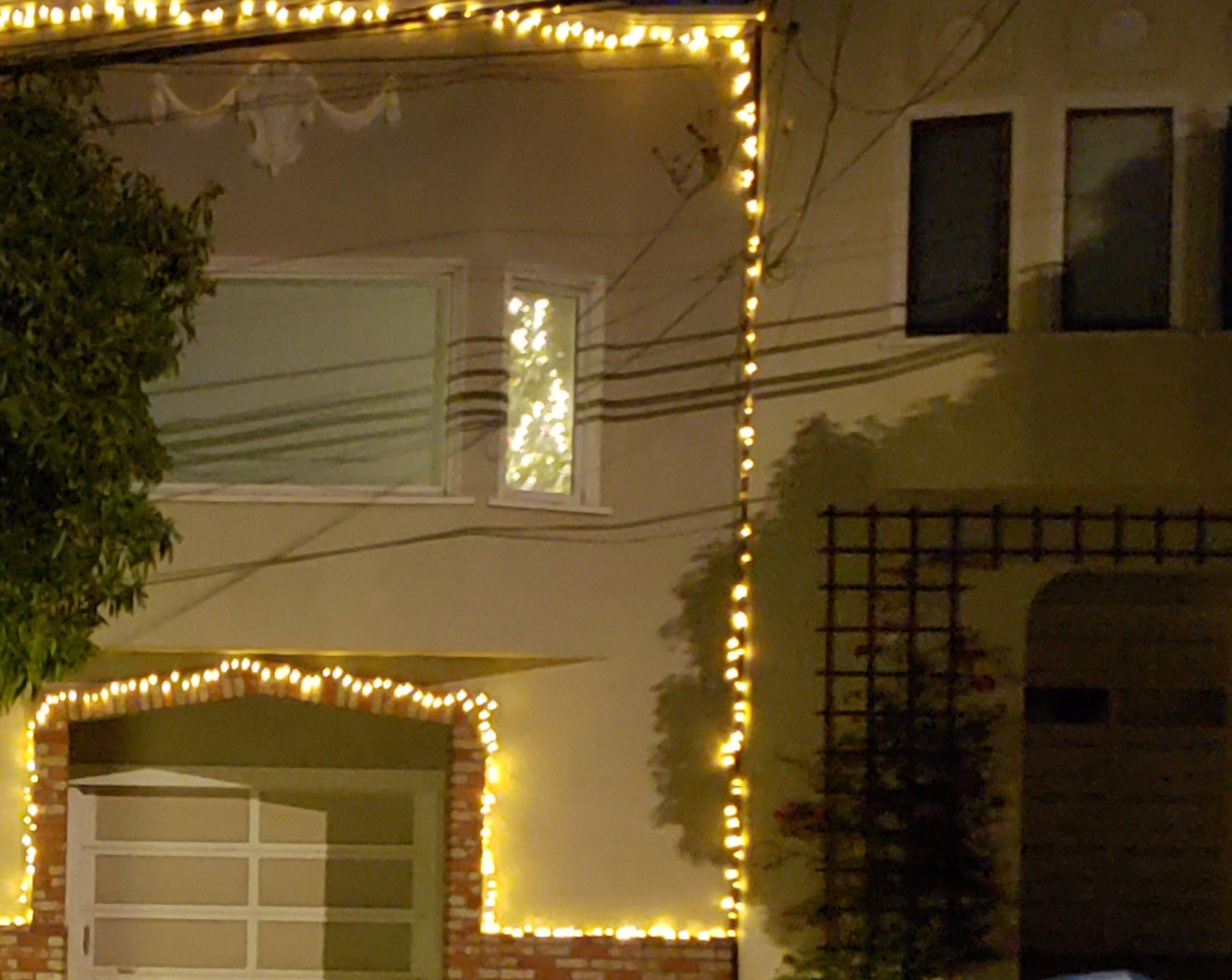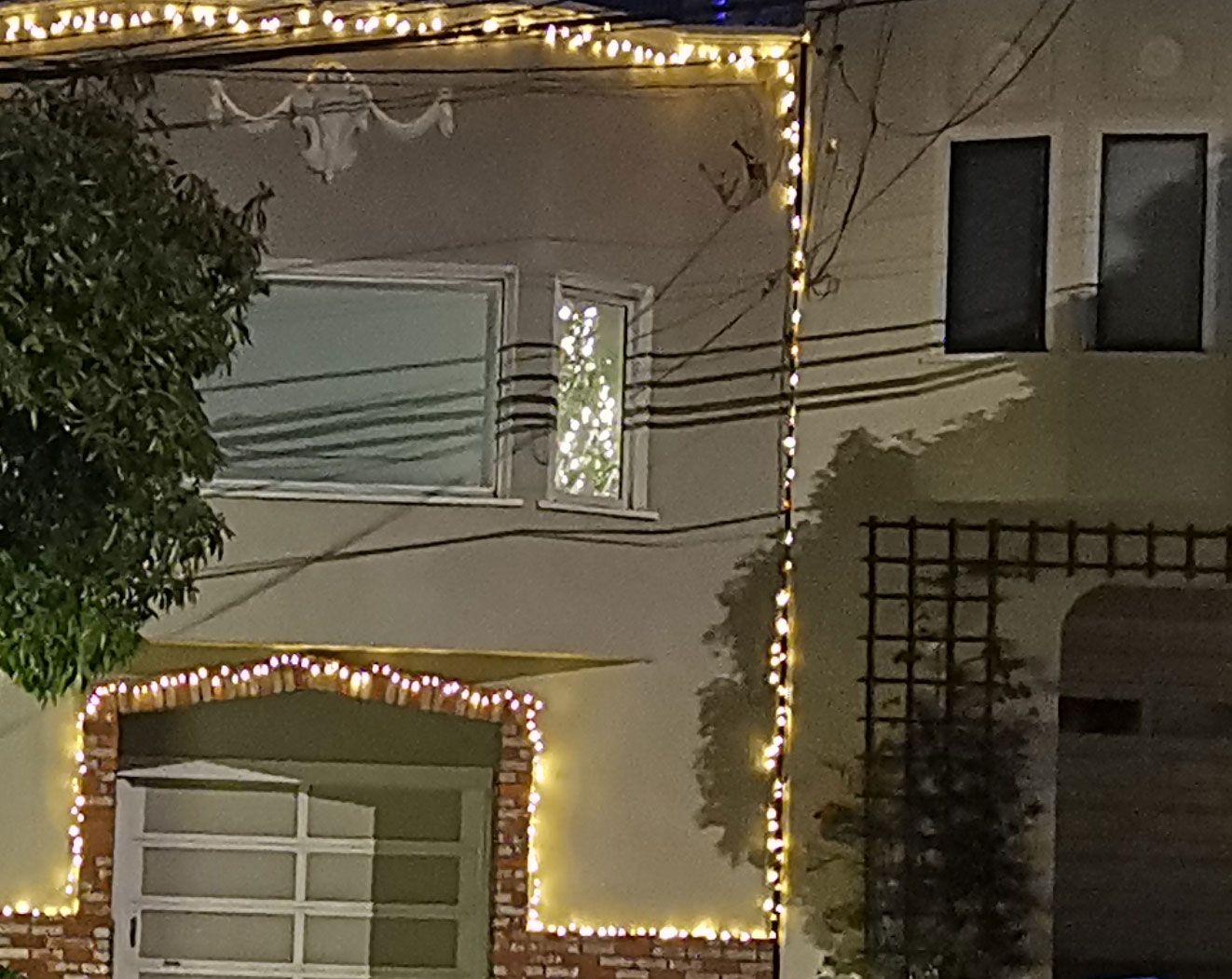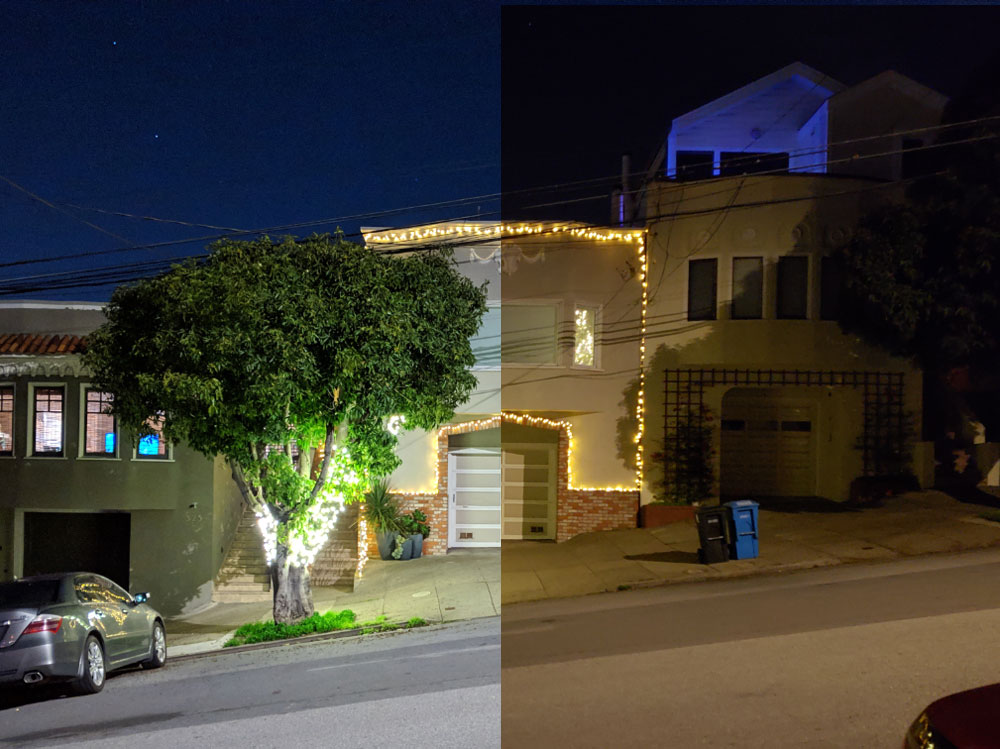
Excellent low-light photography is the most sought-after quality in a smartphone camera. For many users, it has become a proxy for “how good” a camera really is, and therefore a proxy of its (monetary) value.
Night photography is where great cameras distance themselves from “good” ones. As light data becomes scarce, the difference in the whole photography pipeline (from lens to jpg) can become much more pronounced when comparing cameras.
Smartphone makers have been particularly creative when it comes to wowing consumers and reviewers. The intense competition is pushing part of the industry towards using easier solutions based on heavy image filtering, instead of difficult and expensive ones, based on better optics+sensors and advanced image processing.
First, let’s clarify some terminology we’ll be using:
- “image processing”: software work that improves the image data quality
- “image filtering”: software work that changes the style (aesthetic) of the photo.
- “context photo”: a great approximation of what we see
- Including how dark the scene actually is
- Only to provide the context of the shot.
- Not an image quality benchmark
In general, taking better low-light pictures involves gathering more light. Having a larger lens and sensor contributes to it on the hardware side. Capturing multiple frames to compose a final photo follows a similar logic, but from a software perspective.
It is now common to use bursts of ~4 frames to gather more data to reduce the noise-to-signal ratio (SNR). This image processing technique is called noise reduction by image averaging and the same concept can apply when using different exposures as well. It’s called multi-frame HDR and Google made it popular with the HDR+ Pixel phone feature. Today, every high-end cameras use a flavor of these techniques.
"TAKING BETTER LOW-LIGHT PICTURES INVOLVES GATHERING MORE LIGHT"An extreme version of that concept is the various long-exposure (3-5 seconds) modes introduced originally by Huawei/Honor (Night Mode) but added by Xiaomi, Google (Night Sight) and more. They can be formidable tools, but they don’t always make a low-light image “better” in the common image quality sense of the term.
Phones went from shooting photos that were “too dark” (compared to what our eyes can see), to shooting something a bit brighter than what we perceive. Now, we’re entering into a new territory of “extremely brightened” and “night-vision style” photography. Can these cameras capture better image data, and should you pay extra for it? That is literally the $1000 question these days.
Example #1: standard night shot
Important: the context photos illustrate how the scene looks and feels, it’s not a quality benchmark. We can’t teleport you to the scene, so these context shots are the best alternative.
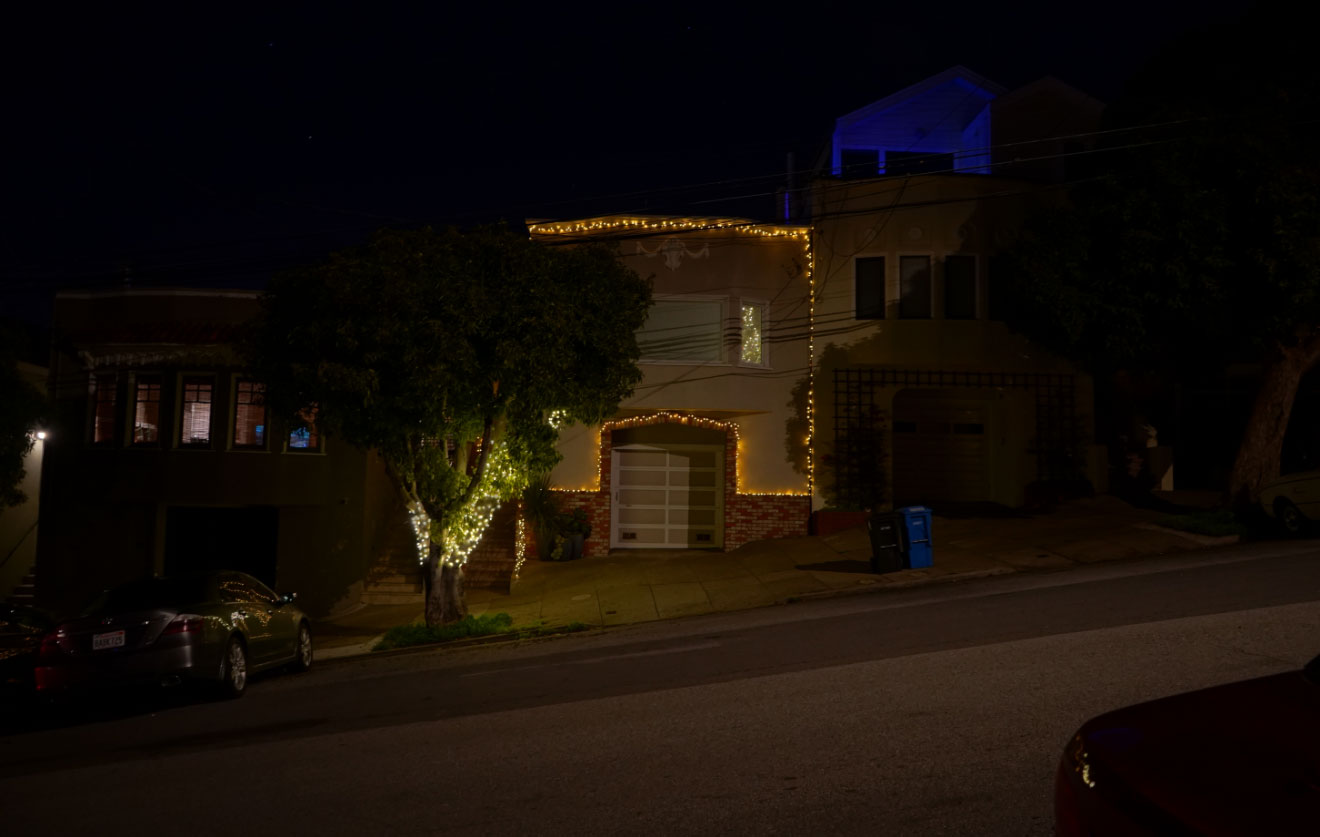
Context photo: as if you were at the scene
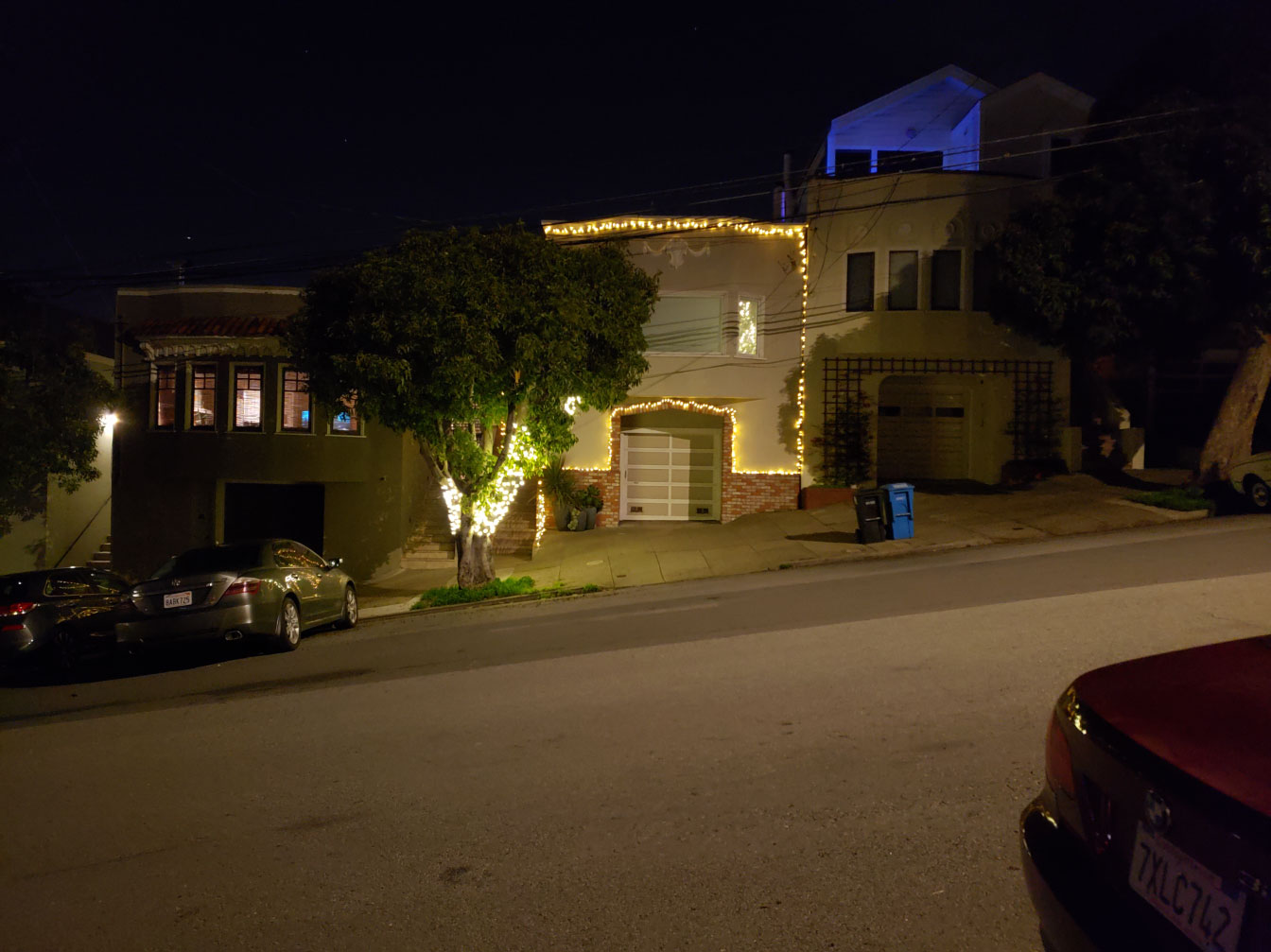
Handset A, straight out of camera

Handset B, straight out of camera
Use the gallery above to see the larger version of the images. The first thing that is obvious in this photo is how Handset B has altered the colors. Both phone photos are brighter than what our eyes perceive, but the handset A extra brightness can be easily toned down to have a more natural look if desired. Handset B’s photo is far off, and quite difficult to return to a natural look.
Both handsets have altered the trees lighting, with B doing it much more. The tree to the right is now nearly as bright as the house in the middle. You can see in the context photo that it wasn’t the case at all in the actual scene. This would be impossible to tweak on a phone if the user wanted to capture a more life-like scene.
Although it is brighter, the image quality (noise, color, detail…) of handset B is not particularly better. Let’s take a closer look. You can see it is a bit noisier, and the tree leaves show a very strong sharpening filtering which makes it look less natural. Since the lighting has been altered, the tree with the light has lost some shadows in middle, making it seem flatter. You can use the slider to compare:

Context photo, crop
One could argue that the lights are slightly better exposed with Handset B and that details are a bit crisper too. Some of it is due to an aggressive noise-reduction filter in A, along with aggressive sharpening in B.
Finally, Handset A can easily be filtered to look brighter (see below), or darker/natural. Keep in mind that filtering is just a change of style/aesthetics which, in the context of a camera review, would have little bearing on what we would consider to be the “image quality” of the original shot.

Handset B, straight out of camera

Handset A, after simple filtering to look more like Handset B
Takeaway
As long as the original capture quality is good, you have a lot of options when it comes to changing it with filters. However, once it has been filtered, your options for further filtering will be drastically reduced, because aggressive filtering destroys the original data. You cannot undo a filter with another filter.
In this case, Handset B is automatically using heavy filtering, which cannot be undone later.
"A MORE NEUTRAL CAMERA GIVES YOU MORE OPTIONS TO BE CREATIVE"For built-in camera filters that are automatically applied, it’s hard to find a camera tuning that matches what you want, in every situation. And since filtering cannot always be reversed, a more neutral (less automatic filters) camera gives you more options to be creative.
Example #2: Long Exposure
Inevitably, we get the question: what if I use an ultra-long exposure mode? Doesn’t it capture much better data? Unfortunately, not exactly. For now.
In some situations where you are in near darkness (your eyes have a hard time seeing shapes and colors), these long exposure modes can reveal details not visible to the naked eye, like Night Vision.
If you are willing to capture a seemingly black scene for 3-5 seconds and hope for the best, you can definitely do it with long-exposure. That’s how people capture great photos of the Aurora or the Milky Way. Also, night-vision fans should check our review of the SiOnyx Aurora!
Again, the context image, then the long-exposure photo.

Context photo: as if you were at the scene

Handset C, using a long-exposure photo mode

Handset C, normal photo
As you can see, the long exposure gives a very unique look to the photo and if you look closer, it does have genuine benefits such as reducing noise levels. However, it has a tendency to alter colors too substantially, and that removes the option of having a normal/natural photo if the user wanted to. (these long-exposure modes can be used even in daylight as well btw!)
It would be great if the long-exposure mode could actually emulate the dynamic range of more expensive cameras without “nuking” the original colors and lighting. But for now, they act more like very fun, powerful filters.
So yes, in a sense, long-exposure shots do make low-light images better, but there can be serious side-effects that people may or may not like. For now, we will treat them as a separate offshoot of low-light photography.
Conclusion: pay for actual image quality, style is free
Next time you see a low-light photo that is “brighter” don’t assume it is “better”: it depends on the context. When we review cameras, we use reality as a frame of reference because it’s important to show you how close (or far) the captures can be from the real world.
Technically, it’s possible to have two slightly different-looking images that have the same objective level of image quality (if we’re a bit flexible color accuracy) because each camera produces a slightly different outcome.
"TOO MUCH FILTERING CAN MAKE PHOTOS LOOK WEIRD OR FAKE"Capturing images that relatively close to what people “see” is also a great way to ensure control and predictability: that helps to take great pictures too. Most people are okay with a bit of enhancement, but too much filtering can make photos look weird or fake, very much like the uncanny valley in robotics and computer graphics.
The important thing is to have high-quality image data – that’s what you’re paying for. It means great detail, low noise, good color preservation. Brightening up an image via a filter is free. Once an excellent quality photo (data-wise) has been captured, you can make it unique with your own choice of filters.
Happy low-light photography!
Filed in . Read more about Cameras, Editorspick, Night Vision, Photography, Photography Concepts and Social Hit.



